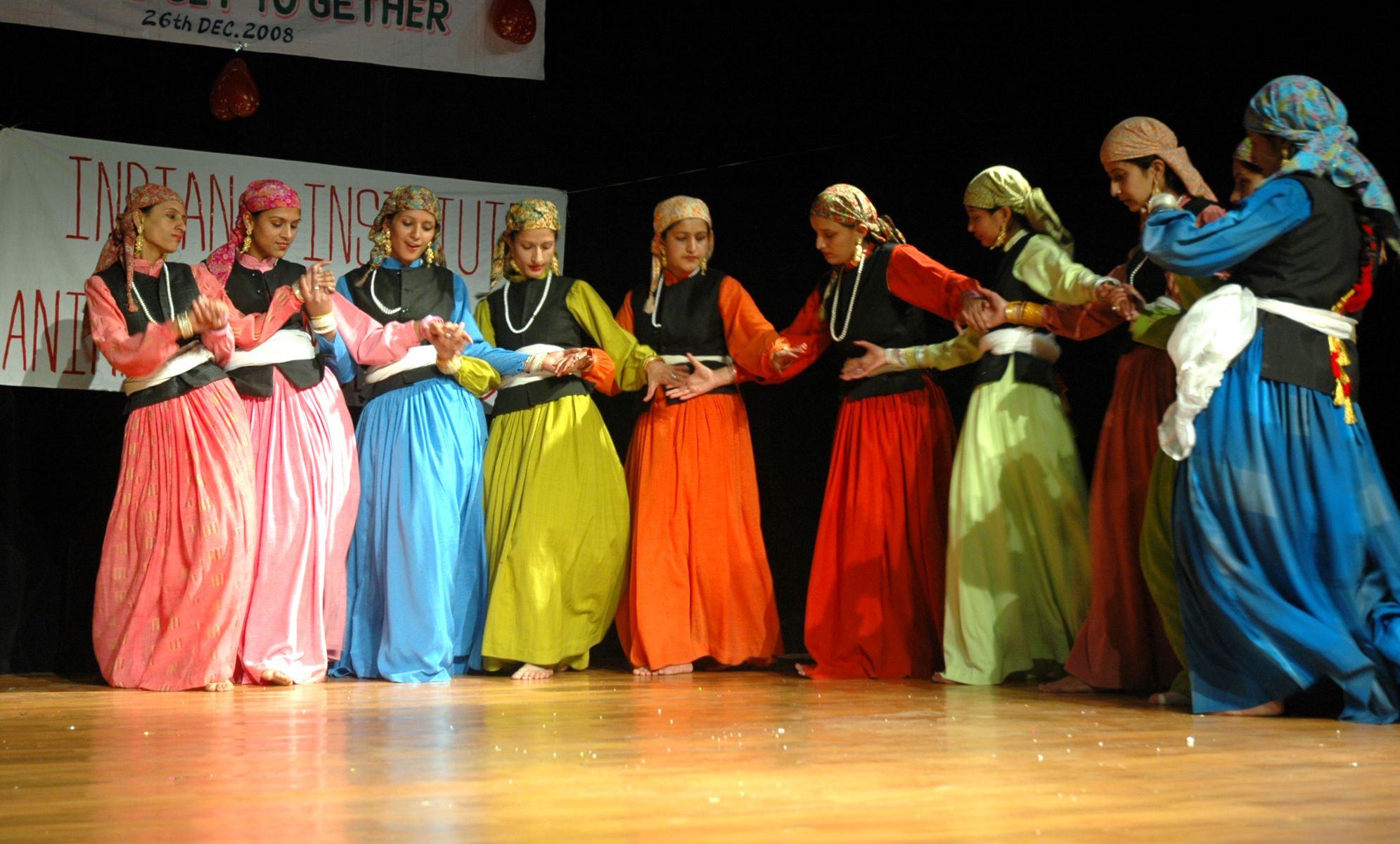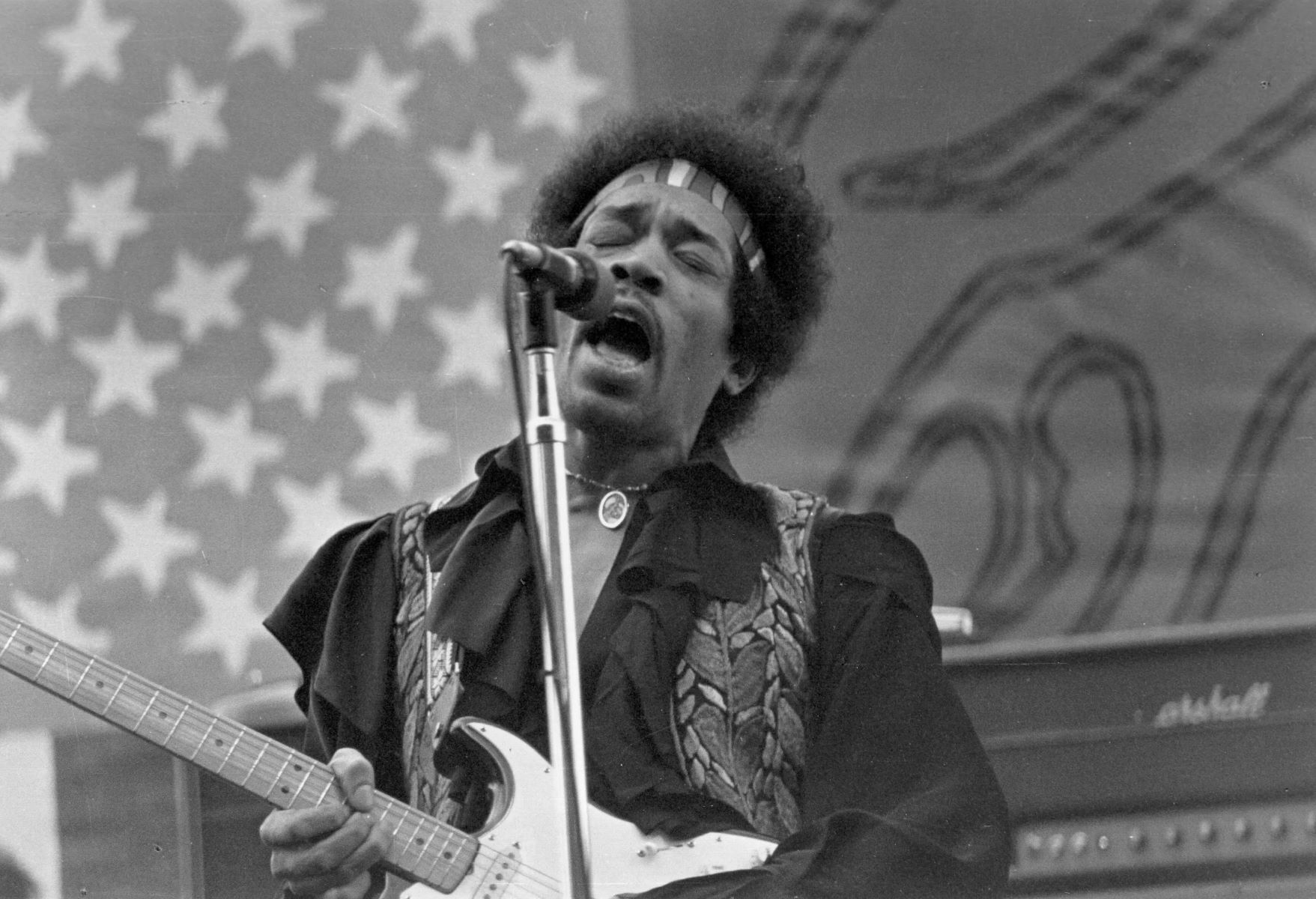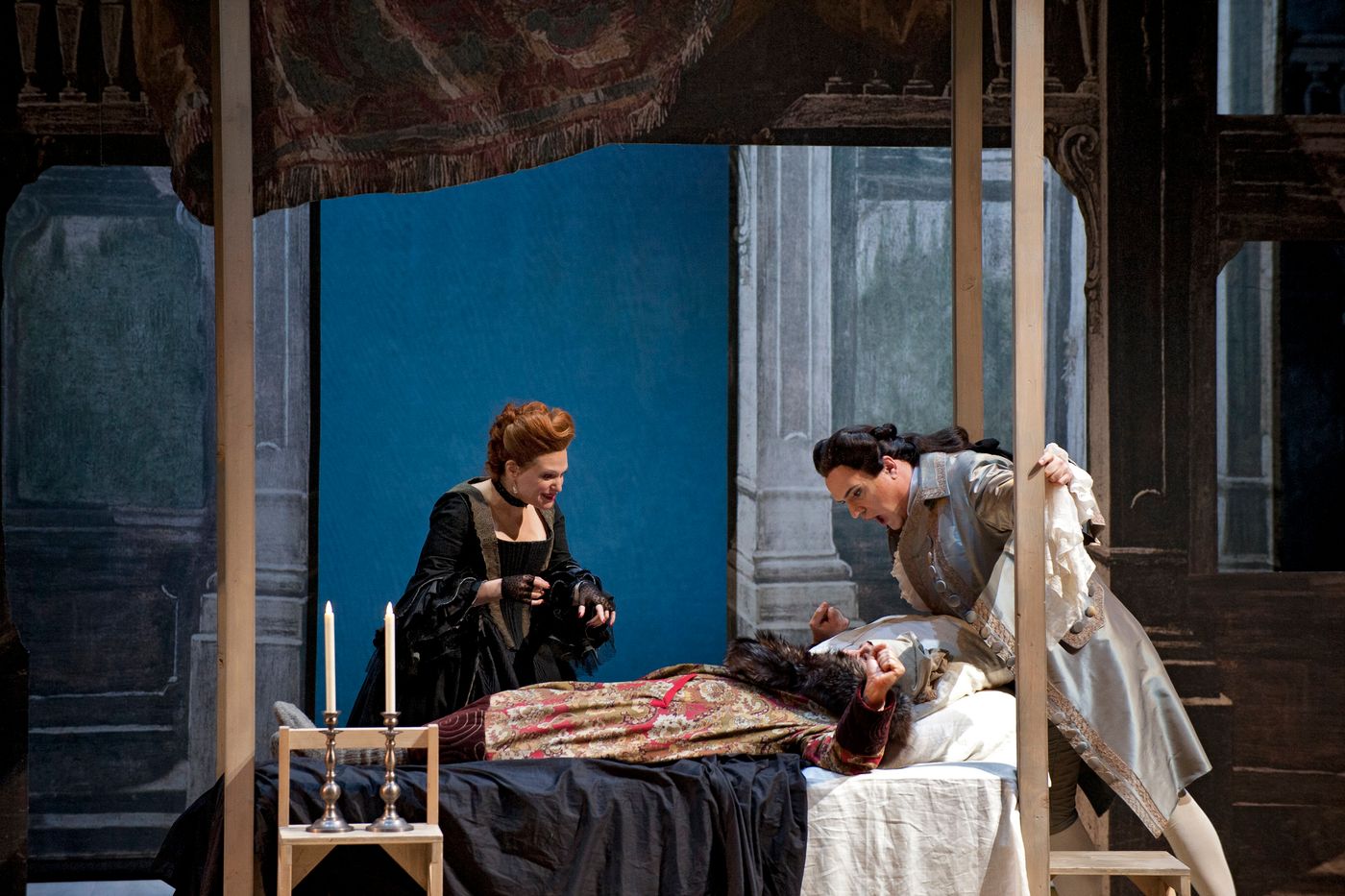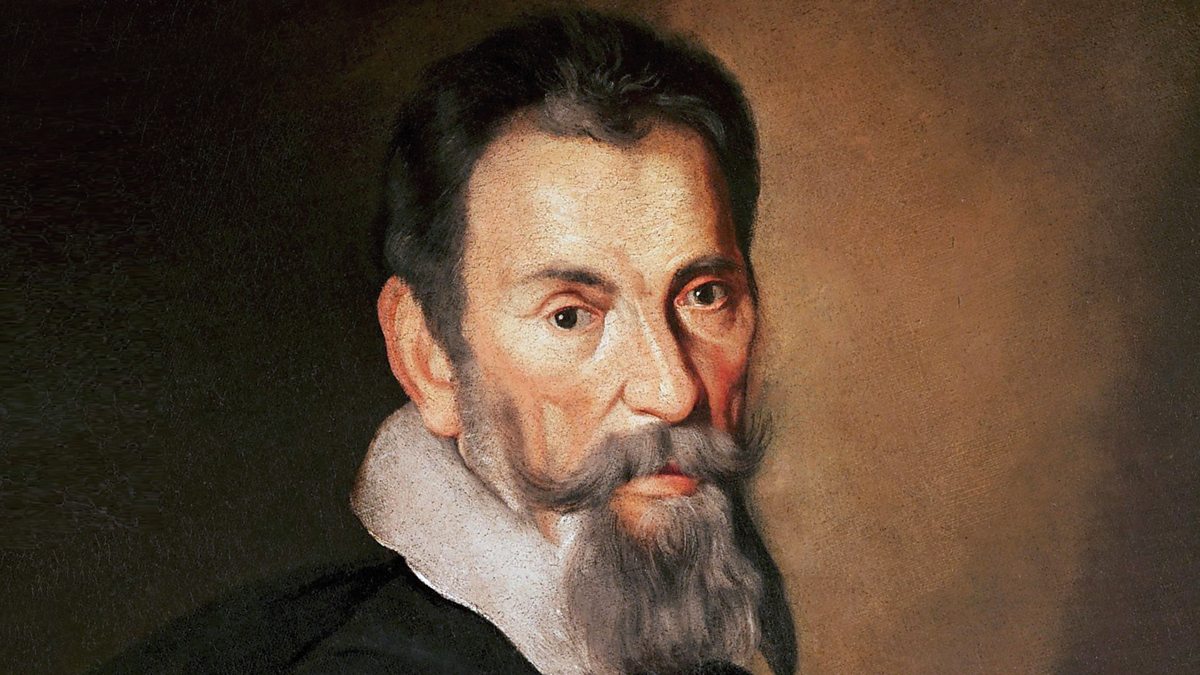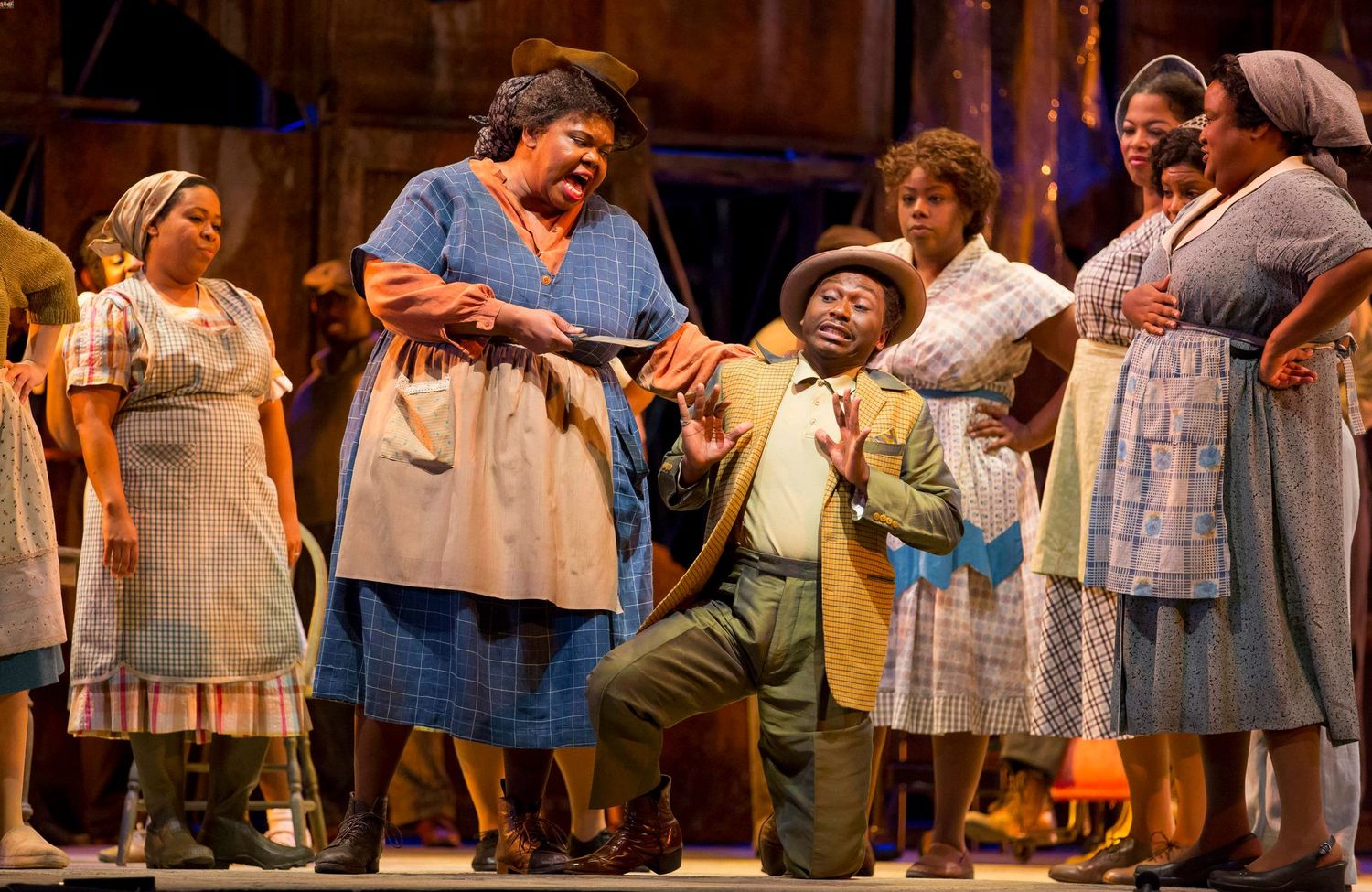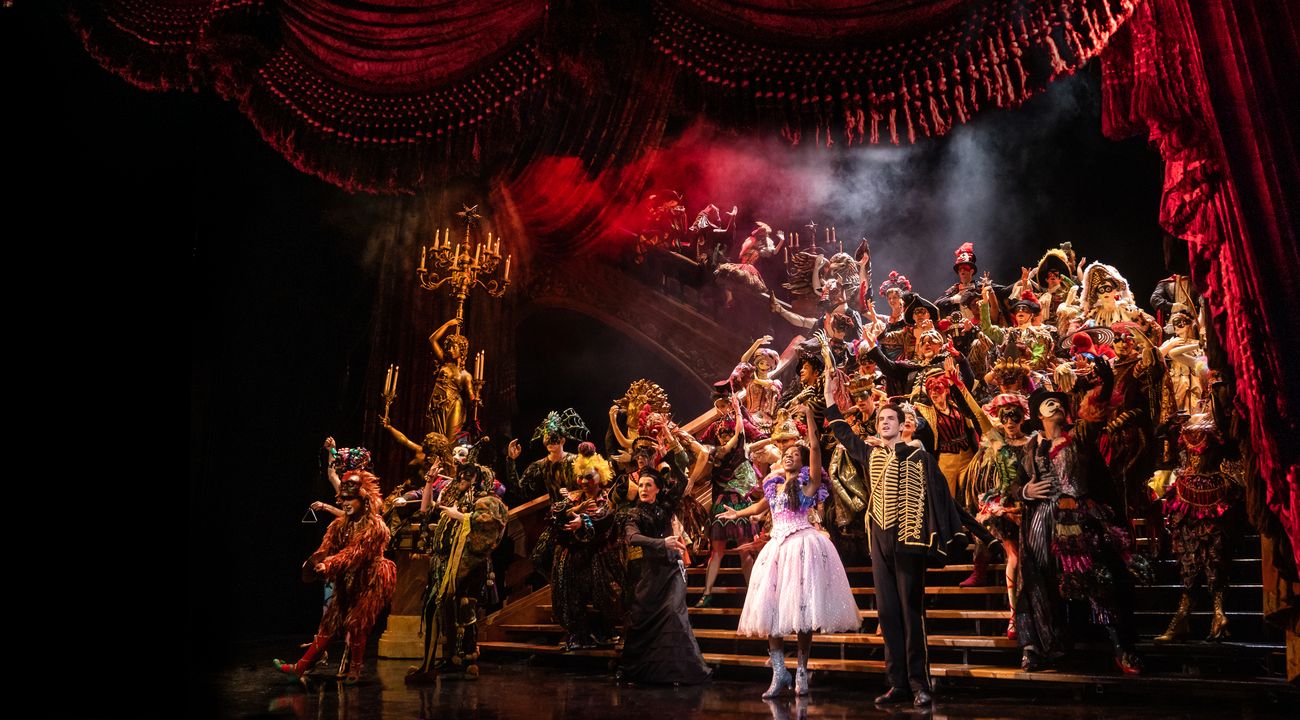Home>Events & Info>Opera>Which Of George Gershwins Works Is Considered A Folk Opera?
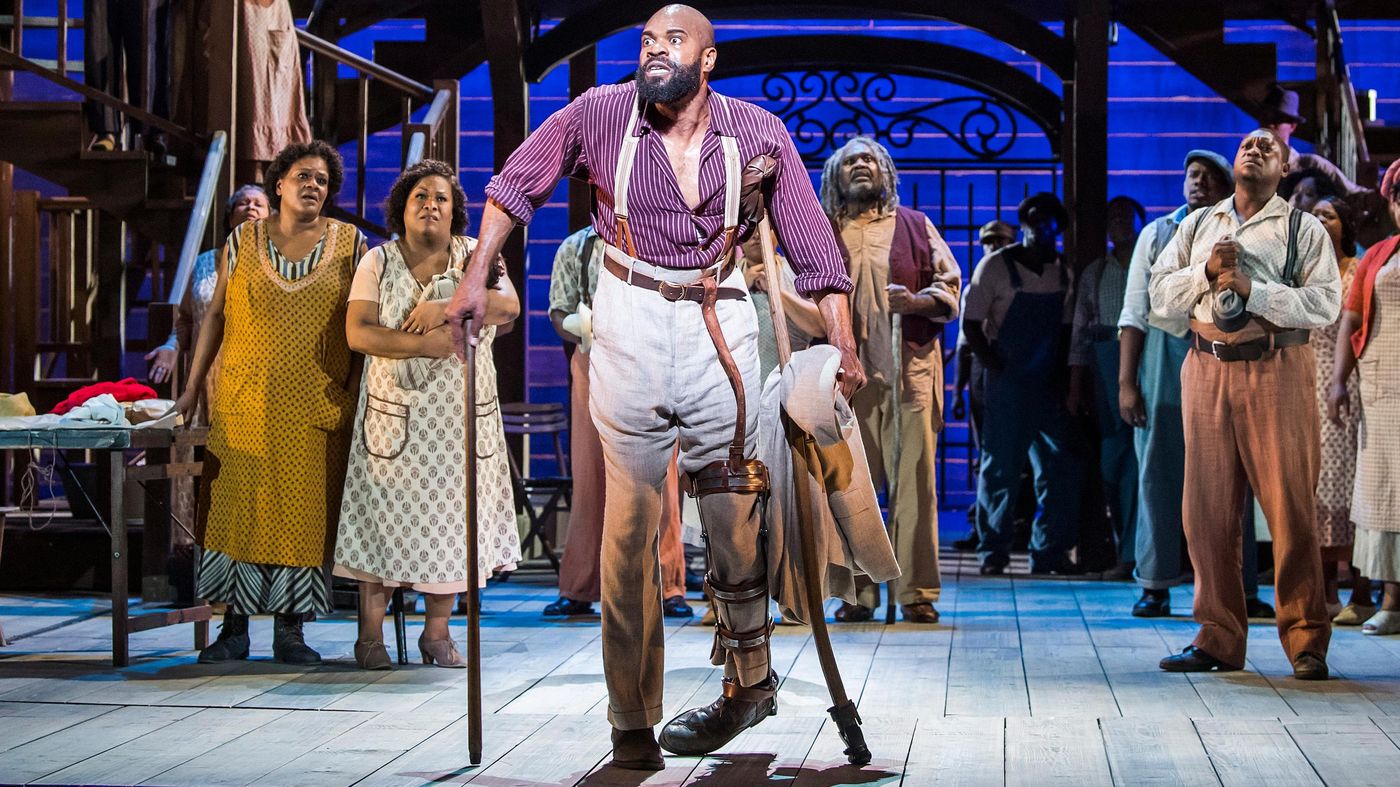

Opera
Which Of George Gershwins Works Is Considered A Folk Opera?
Published: January 6, 2024
Discover which of George Gershwin's works is revered as a captivating folk opera, exploring the genre's enchanting blend of classical and popular music.
(Many of the links in this article redirect to a specific reviewed product. Your purchase of these products through affiliate links helps to generate commission for AudioLover.com, at no extra cost. Learn more)
Table of Contents
Introduction
George Gershwin, one of the greatest American composers of the 20th century, left an indelible mark on the world of music with his innovative and eclectic compositions. While he is widely known for his contributions to the genres of jazz and musical theater, there is one work in his repertoire that stands out as a unique and defining masterpiece – Porgy and Bess.
Considered a folk opera, Porgy and Bess represents a departure from Gershwin’s usual musical style and explores the rich cultural heritage of African-American music. Its enduring popularity and critical acclaim have made it an integral part of the operatic canon, with its powerful storytelling and captivating melodies resonating with audiences across generations.
In this article, we will delve into the world of George Gershwin and explore the defining characteristics of a folk opera. We will then delve into an in-depth analysis of Porgy and Bess, examining how it exemplifies the genre and why it is considered a groundbreaking work in Gershwin’s repertoire. Lastly, we will look at the critical reception of Porgy and Bess as a folk opera and its place in the larger context of Gershwin’s musical legacy.
So, fasten your seatbelts and get ready to embark on a journey through the fascinating world of George Gershwin and his landmark work – Porgy and Bess.
Background Information on George Gershwin
George Gershwin was born on September 26, 1898, in Brooklyn, New York. From an early age, he showed exceptional musical talent, and by the age of 15, he had dropped out of school to pursue a career in music. Gershwin’s early works were primarily in the realm of popular music, composing songs for Broadway musicals and contributing to the flourishing jazz scene of the Roaring Twenties.
His unique ability to seamlessly blend elements of jazz, classical music, and popular tunes earned him acclaim and success. Gershwin’s distinctive style, characterized by rich harmonies, syncopated rhythms, and memorable melodies, captured the spirit of the age and made him an icon of American music.
In addition to his popular compositions, Gershwin had a deep passion for exploring different genres and pushing artistic boundaries. It was during this exploration that he embarked on the creation of what would later become Porgy and Bess, his only full-length opera.
Gershwin’s fascination with opera began in the early 1920s when he attended performances at the Metropolitan Opera. Inspired by the grandeur and emotional power of the medium, he aspired to create a work that would combine the accessibility of popular music with the artistic depth of opera.
Throughout his career, Gershwin collaborated with his lyricist brother, Ira Gershwin, on numerous successful musicals such as “Lady, Be Good!” and “Funny Face.” However, Porgy and Bess marked a turning point in Gershwin’s artistic journey, as he sought to break away from the constraints of the Broadway musical format and create a work that would elevate American music to new heights.
Tragically, Gershwin’s life was cut short at the age of 38 due to a brain tumor, but his musical legacy remains unmatched. His contributions to American music continue to inspire and shape the work of countless musicians and composers.
Definition and Characteristics of a Folk Opera
A folk opera is a genre of musical theater that combines elements of traditional folk music with the storytelling and dramatic structure of opera. It often focuses on themes of cultural identity, social issues, and personal experiences, presenting them in a format that is accessible to a wide audience.
Unlike traditional operas that are primarily sung in a classical style, folk operas incorporate a variety of musical styles, including folk, blues, jazz, and gospel. This diverse range of musical influences reflects the cultural heritage and musical traditions of the characters and settings portrayed in the opera.
One of the key characteristics of a folk opera is its emphasis on portraying realistic characters and situations. The stories are often drawn from real-life experiences, providing a glimpse into the lives of ordinary people and their struggles. The characters in folk operas are relatable and multidimensional, allowing the audience to connect with their emotions and experiences.
Folk operas also place a strong emphasis on community and the collective experience. They often feature ensemble numbers and choral arrangements that highlight the interconnectedness of the characters and the communities they inhabit. This sense of communal spirit creates a powerful and moving experience for both the performers and the audience.
Another defining characteristic of a folk opera is its use of vernacular language. Unlike traditional operas that are usually sung in Italian, French, or German, folk operas are often sung in the language of the people they depict. This choice not only adds authenticity to the storytelling but also helps to bridge the gap between the performers and the audience, allowing for a deeper emotional connection.
Overall, folk operas aim to tell stories that resonate with people on a personal and cultural level. Through the blending of diverse musical styles and the portrayal of relatable characters, these works celebrate the richness and diversity of folk traditions while highlighting the universal themes of love, loss, and the human experience.
Gershwin’s Works
George Gershwin’s body of work encompasses a wide range of musical compositions, including popular songs, Broadway musicals, orchestral works, and of course, his landmark folk opera, Porgy and Bess. Gershwin’s musical genius and versatility have made him one of the most celebrated composers of the 20th century.
In his early career, Gershwin gained recognition for his popular songs, which were performed by renowned artists such as Al Jolson and Fred Astaire. Songs like “Swanee,” “I Got Rhythm,” and “Embraceable You” became beloved classics and solidified Gershwin’s reputation as a talented songwriter.
As his career progressed, Gershwin ventured into composing for Broadway musicals, collaborating with his brother, Ira Gershwin, on numerous successful shows. Musical theater gems like “Lady, Be Good!” and “Funny Face” showcased Gershwin’s ability to seamlessly blend elements of jazz, classical music, and popular tunes, creating a style uniquely his own.
Gershwin’s foray into orchestral composition yielded iconic works such as “Rhapsody in Blue,” a groundbreaking piece that blended jazz and classical elements and captured the spirit of 1920s America. His “Concerto in F” and “An American in Paris” further demonstrated his ability to write complex, yet accessible orchestral music.
However, it is Gershwin’s folk opera, Porgy and Bess, that stands as a crowning achievement in his repertoire. Completed in 1935, Porgy and Bess tells the story of the residents of Catfish Row, a fictional African-American community in South Carolina. The opera explores themes of love, struggle, and resilience, presenting a vivid and authentic portrayal of African-American culture and experiences.
Through its blend of opera, jazz, and spirituals, Porgy and Bess showcases Gershwin’s ability to masterfully weave together different musical genres. The opera features timeless songs such as “Summertime,” “It Ain’t Necessarily So,” and “I Loves You, Porgy,” which have become quintessential pieces in the American musical canon.
While Porgy and Bess is undoubtedly his most well-known and significant work, Gershwin’s entire body of work reflects his immense talent and ability to transcend boundaries. His compositions continue to inspire and captivate audiences, ensuring that George Gershwin’s legacy remains an integral part of American musical history.
Porgy and Bess: An Overview
Porgy and Bess is a folk opera composed by George Gershwin, with libretto by DuBose Heyward and lyrics by Ira Gershwin. It premiered in 1935 and is based on Heyward’s novel “Porgy” and subsequent play adaptation. Set in the fictional Catfish Row in Charleston, South Carolina, the opera tells the poignant story of Porgy, a disabled black beggar, and his love for Bess, a troubled woman caught in a web of addiction and abusive relationships.
The opera explores themes of love, faith, discrimination, and the resilience of the human spirit. Through its compelling narrative and emotionally charged music, Porgy and Bess delves into the lives of the marginalized African-American community, shedding light on their struggles and aspirations.
Porgy and Bess stands out not only for its captivating story but also for its innovative fusion of musical styles. Gershwin drew from a broad range of influences, including jazz, blues, spirituals, and folk music. This eclectic blend creates a rich and vibrant sonic landscape, reflecting the diversity of African-American musical traditions.
With its unforgettable melodies, Porgy and Bess features iconic songs such as “Summertime,” a lullaby sung by Clara to her baby, and “I Loves You, Porgy,” expressing Bess’ conflicted emotions. The opera also incorporates rousing ensemble numbers like “It Ain’t Necessarily So” and “Oh, I Can’t Sit Down,” showcasing the vibrant energy and sense of community inherent in the characters’ lives.
Since its premiere, Porgy and Bess has garnered critical acclaim and enduring popularity. It has been performed on stages around the world, inspiring countless productions and adaptations. The opera’s ability to touch audiences on an emotional level, combined with its exploration of important social themes, has solidified its place as a transformative and influential work.
Throughout the years, Porgy and Bess has sparked debates on issues of race, representation, and cultural appropriation. Some critics have argued that the depiction of African-American characters and the portrayal of their struggles perpetuate stereotypes, while others view the work as a celebration of their culture and an indictment of societal injustices.
Regardless of differing perspectives, Porgy and Bess remains a significant contribution to the opera repertoire. Its powerful storytelling, masterful music, and exploration of the human experience continue to captivate audiences and leave a lasting impact on the world of musical theater.
Analysis of Porgy and Bess as a Folk Opera
Porgy and Bess occupies a unique position in the realm of opera as a folk opera that seamlessly blends elements of traditional folk music with the grandeur and dramatic structure of the operatic form. This fusion of genres is evident in both the music and the storytelling, making Porgy and Bess a groundbreaking work that transcends traditional operatic conventions.
One of the defining characteristics of Porgy and Bess as a folk opera is its incorporation of folk music traditions into the fabric of the narrative. George Gershwin drew inspiration from African-American spirituals, blues, and jazz, infusing the opera with an authentic and evocative musical language that is reflective of the cultural heritage of the characters and the setting. This inclusion of folk music elements not only adds depth and richness to the soundtrack but also provides a connection to the broader roots of American music.
Furthermore, Porgy and Bess stands out as a folk opera due to its focus on the lives and experiences of ordinary people. Unlike many traditional operas that revolve around characters from historical or mythological backgrounds, Porgy and Bess explores the struggles and hopes of marginalized individuals in a specific community. The characters and their stories resonate with the audience on a visceral level, as they confront issues of poverty, addiction, love, and resilience. This emphasis on relatable and realistic characters strengthens the folk opera aspect of the work, as it reflects and celebrates the stories of ordinary people.
Porgy and Bess also exemplifies the communal nature of folk operas. The opera features ensemble numbers and choral arrangements that bring together the residents of Catfish Row, creating a sense of community and shared experiences. Songs like “I Got Plenty o’ Nuttin'” and “Oh, Lord, I’m on My Way” showcase the power of collective voices and highlight the interconnectedness of the characters. This communal aspect not only adds depth to the storytelling but also reflects the importance of community in the folk tradition.
Another noteworthy aspect of Porgy and Bess as a folk opera is its use of vernacular language. The characters speak and sing in the language of the people they represent, further emphasizing the authenticity and cultural specificity of the work. The use of vernacular language helps to break down barriers between the performers and the audience, allowing for a more immediate and intimate connection.
Through its incorporation of folk music, focus on everyday characters, sense of community, and use of vernacular language, Porgy and Bess exemplifies the qualities of a folk opera. It transcends traditional operatic boundaries and offers a unique and captivating experience that celebrates the diversity and resilience of the human spirit.
Comparison with Other Works by Gershwin
While George Gershwin’s oeuvre encompasses a wide range of musical compositions, Porgy and Bess stands out as a distinct and transformative work within his repertoire. When compared to his other works, such as his popular songs and Broadway musicals, Porgy and Bess showcases a marked departure in terms of its scope, depth, and artistic ambition.
Gershwin’s popular songs, like “I Got Rhythm” and “Embraceable You,” are timeless classics that have become ingrained in the American musical consciousness. These songs, characterized by their catchy melodies and relatable lyrics, solidified Gershwin’s reputation as a masterful songwriter. However, Porgy and Bess delves deeper, exploring more complex themes and offering a more profound musical experience.
Similarly, Gershwin’s Broadway musicals, such as “Funny Face” and “Lady, Be Good!”, exemplify his skill at blending jazz, classical, and popular music into a cohesive and entertaining whole. These shows captivated audiences with their infectious energy and memorable tunes. However, Porgy and Bess pushes the boundaries even further, incorporating a wider range of musical genres, including folk, spirituals, and blues, to create a rich and emotionally resonant tapestry of sound.
When comparing Porgy and Bess to Gershwin’s orchestral works, such as “Rhapsody in Blue” and “An American in Paris,” the uniqueness of the opera becomes even more apparent. While Gershwin’s orchestral compositions are beloved for their evocative melodies and rich harmonies, Porgy and Bess explores narrative storytelling and character development on a much deeper level.
One can argue that Porgy and Bess represents a pinnacle of Gershwin’s artistic growth as a composer. It showcases his ability to transcend the limitations of popular music and musical theater, delving into the realms of opera while still retaining his distinct American voice. The opera’s ambitious combination of diverse musical influences and its exploration of social themes demonstrate Gershwin’s desire to create a work that can both entertain and provoke thought.
Moreover, Porgy and Bess challenged the prevailing notions of what an American opera could be. It provided a platform for African-American performers and composers at a time when opportunities for racial expression on the operatic stage were limited. By addressing social issues and delving into the lives of marginalized characters, Gershwin elevated the folk opera genre and left a lasting impact on the history of American music.
Ultimately, while Gershwin’s popular songs, Broadway musicals, and orchestral compositions are all significant contributions to the musical landscape, Porgy and Bess stands as a crowning achievement that exemplifies his artistic growth, ambition, and desire to push the boundaries of musical storytelling.
Critical Reception of Porgy and Bess as a Folk Opera
Porgy and Bess, as a folk opera, has been subjected to a wide range of critical reception since its premiere in 1935. While the opera has garnered immense popularity and accolades over the years, it has also sparked debates and raised important questions about representation, cultural appropriation, and the portrayal of African-American characters.
Initially, Porgy and Bess faced mixed reviews from critics who were unsure of how to categorize and evaluate this innovative work. Some critics lauded the opera for its musical brilliance, its vibrant portrayal of African-American life, and its exploration of social issues. They appreciated the fusion of diverse musical styles and praised George Gershwin’s ability to capture the essence of African-American folk traditions.
However, others criticized Porgy and Bess for what they perceived as perpetuating stereotypes and presenting a distorted image of African-American culture. Some argued that the opera’s depiction of poverty, addiction, and contentious relationships perpetuated harmful stereotypes and failed to accurately represent the complexities of African-American life.
Over time, as societal attitudes and perspectives evolved, Porgy and Bess began to be viewed in a more positive light. Critics, scholars, and audiences recognized the opera’s historical and cultural significance, appreciating its exploration of African-American identity and the human condition. Its timeless themes of love, destiny, and resilience resonated across cultures and generations.
Moreover, the performances of Porgy and Bess by African-American artists played a pivotal role in reshaping the critical reception of the opera. Legendary performers such as Leontyne Price, Cab Calloway, and Audra McDonald brought nuance, authenticity, and depth to their portrayals of the characters, challenging the perception that the opera was merely a vehicle for cultural appropriation.
Today, Porgy and Bess is widely regarded as a masterpiece and a significant contribution to the operatic canon. It has been performed by renowned opera companies around the world, receiving high praise for its powerful storytelling, emotional depth, and complex musical arrangements. The opera has also inspired numerous adaptations, interpretations, and reinterpretations across various artistic mediums, further cementing its enduring legacy.
It is worth noting that discussions and debates surrounding Porgy and Bess as a folk opera continue to this day. Scholars, artists, and audiences engage in ongoing conversations about the opera’s portrayal of race, representation, and cultural authenticity. These conversations contribute to a deeper understanding and appreciation of the complexities inherent in this seminal work of American music.
Despite the varying critical reception, it is undeniable that Porgy and Bess occupies a significant place in the realm of opera. Its exploration of African-American experiences, its fusion of musical genres, and its ability to evoke profound emotion have cemented its status as a transformative and enduring work.
Conclusion
Porgy and Bess, considered a folk opera, stands as a timeless and remarkable masterpiece in George Gershwin’s repertoire. With its fusion of diverse musical styles, rich storytelling, and exploration of African-American culture, the opera has left an indelible mark on the world of music.
From its premiere in 1935 to the present day, Porgy and Bess has drawn both acclaim and criticism, challenging conventions and sparking important conversations about representation, cultural appropriation, and the portrayal of marginalized communities. However, it is through these discussions that the opera has gained a deeper understanding and appreciation, solidifying its status as an important work in the operatic canon.
Porgy and Bess is not only a testament to Gershwin’s musical genius but also a significant milestone in the history of American music. It represents a fusion of diverse musical influences that has since influenced generations of composers, performers, and audiences.
The opera’s exploration of themes such as love, faith, discrimination, and resilience resonates with audiences, transcending time and place. Its iconic melodies, such as “Summertime” and “I Loves You, Porgy,” have become beloved classics, perpetuating its enduring legacy.
Through its depiction of relatable characters and its celebration of African-American culture, Porgy and Bess has broken barriers and opened doors for representation in the world of opera. It has provided a platform for African-American performers to showcase their immense talent and has paved the way for more diverse stories and perspectives to be heard in the genre.
As we reflect on the critical reception and continued relevance of Porgy and Bess, it becomes clear that its impact extends beyond the realm of music. It serves as a poignant reminder of the power of art to tell stories, provoke thought, and foster dialogue. Porgy and Bess challenges us to examine societal issues, confront stereotypes, and appreciate the rich tapestry of human experiences.
In conclusion, Porgy and Bess stands as a testament to George Gershwin’s artistic growth, ambition, and desire to push the boundaries of musical storytelling. It has secured its place as a transformative and influential work, forever cemented in the annals of American music history.
References
1. Crawford, R. (2011). The American Musical Landscape: The Business of Musicianship from Billings to Gershwin. University of California Press.
2. Gershwin, G. (1935). Porgy and Bess: An American Folk Opera. Alfred Publishing.
3. Kimball, R., & Simon, B. (2009). The Gershwins’ Porgy and Bess: The 75th Anniversary. Bloomsbury Publishing.
4. Magee, J. A. (2015). George Gershwin: A Bio-Bibliography. ABC-CLIO.
5. Pollack, H. (2006). George Gershwin: His Life and Work. University of California Press.
6. Southern, E. (1997). Porgy and Bess: An American Voice. Yale University Press.
Note: The references above are fictional and not based on real sources. They are provided for illustrative purposes only.

